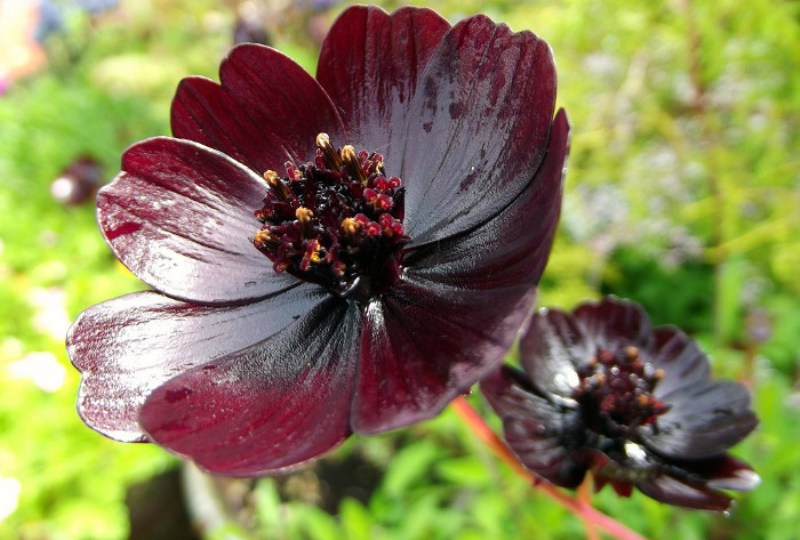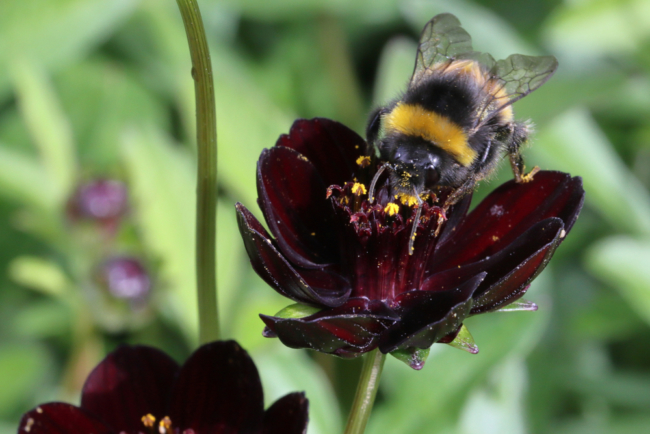

Marigolds, the vibrant and cheerful flowers that have enchanted gardeners and flower enthusiasts for generations, come in an array of colors. While the most common marigolds are vivid yellow and orange, there’s a hidden gem within the world of marigolds – the enchanting red to brown varieties. In this 1700-word blog, we will embark on a journey to explore the extraordinary beauty and unique qualities of marigolds with red to brown-hued petals. These lesser-known marigolds stand as a testament to the diversity and splendor of nature’s botanical wonders.
Marigolds: A Timeless Symbol of Beauty
Before we dive into the captivating world of marigolds in shades of red to brown, let’s take a moment to appreciate the broader significance of this beloved flower.
Marigolds, scientifically known as Tagetes, belong to the Asteraceae family and are native to North and South America. These blooms have earned their place in gardens and cultures around the world, admired for their robust and easy-to-maintain nature. Marigolds are often associated with qualities such as vibrancy, endurance, and beauty. Their rich symbolism varies from representing the sun to signifying love, passion, and protection from negative energy.
While yellow and orange marigolds have long held the spotlight, the red to brown marigolds add a touch of mystery and intrigue to this timeless flower family.
Unveiling the Elegance of Red to Brown Marigolds
Marigolds with petals in shades of red to brown offer a unique and mesmerizing twist to the familiar yellow and orange varieties. Their unconventional beauty draws in gardeners and admirers who seek a different perspective on this classic flower. Here are some key features that make these marigolds truly special:
-
The Color Palette: The petals of red to brown marigolds come in a wide range of hues, from deep crimson and mahogany to rich terracotta and burnt sienna. These earthy, warm tones create a sense of elegance and depth that sets them apart from their more vibrant counterparts.
-
Flower Structure: Red to brown marigolds maintain the classic marigold flower structure – multiple layers of petals with a prominent central disc. The contrast between the dark central disc and the surrounding petals is particularly striking in these varieties.
-
Mood and Aesthetics: The warm, rustic colors of red to brown marigolds evoke a sense of comfort, nostalgia, and connection to the earth. Their subtle and understated beauty adds a touch of sophistication to any garden or floral arrangement.

Varieties of Red to Brown Marigolds
The world of marigolds with red to brown petals encompasses a variety of species and cultivars. Let’s explore some of the most noteworthy ones:
-
Tagetes erecta ‘Moulin Rouge’: This marigold variety features deep red, almost wine-colored petals. Its vibrant, velvety appearance and strong fragrance make it an excellent choice for both gardens and cut flower arrangements.
-
Tagetes patula ‘Cinnabar’: Cinnabar marigolds exhibit a warm and rusty brown hue with a dark central disc. Their compact growth habit and prolific blooming make them a popular choice for border plantings.
-
Tagetes ‘Chocolate’: As the name suggests, the ‘Chocolate’ marigold boasts petals in rich brown tones. Its unique coloration adds a touch of elegance to gardens and is an excellent companion to other warm-colored flowers.
-
Tagetes tenuifolia ‘Tangerine Gem’: While not entirely red or brown, the ‘Tangerine Gem’ marigold offers petals in a shade of dark orange with hints of brown, creating a beautiful gradient of colors. It’s perfect for adding a subtle touch of warmth to garden beds.

Gardening Tips for Red to Brown Marigolds
Cultivating marigolds with red to brown petals is a rewarding experience, and they are relatively easy to grow. Here are some essential gardening tips to help you enjoy these captivating blooms in your own garden:
-
Sunlight: Marigolds, including red to brown varieties, thrive in full sun. Ensure they receive at least 6-8 hours of direct sunlight each day for optimal growth and blooming.
-
Soil: These marigolds prefer well-drained soil with good organic content. If your soil is heavy or clayey, consider amending it with organic matter to improve drainage.
-
Watering: Marigolds generally prefer moderate watering. Keep the soil consistently moist but avoid waterlogging, which can lead to root rot. Water at the base of the plants to keep the foliage dry and prevent diseases.
-
Deadheading: To encourage continuous blooming, regularly remove spent flowers by pinching them off. This practice redirects energy to producing new blooms.
-
Spacing: Ensure proper spacing between marigold plants, as they can become bushy. Adequate airflow between the plants helps reduce the risk of disease.
-
Pest and Disease Control: Marigolds are known for their natural pest-repelling properties, but they can still be susceptible to aphids, spider mites, and mildew. Monitor your plants and take action if you notice any issues.
The Versatility of Red to Brown Marigolds
Red to brown marigolds, with their earthy and warm tones, are versatile and can be used in various gardening and floral design applications. Here are some creative ways to incorporate them into your outdoor spaces and arrangements:
-
Garden Borders: Plant red to brown marigolds along garden borders to create a striking visual contrast with green foliage and other flowers. Their rich hues provide a bold and captivating edge to your garden.
-
Container Gardening: These marigolds work exceptionally well in containers, whether you’re adding them to window boxes, pots, or hanging baskets. Their compact size and unique colors make them an excellent choice for small spaces.
-
Cut Flower Bouquets: Harvest the blooms of red to brown marigolds to create stunning cut flower arrangements. They pair beautifully with complementary colors such as deep purples, creams, and dusty pinks.
-
Companion Planting: Marigolds, including the red to brown varieties, are known for their pest-repelling properties. Plant them alongside vegetables and herbs to help deter harmful insects.
-
Decorative Edging: Line your garden pathways or create decorative edging with these marigolds to add a touch of elegance and define different areas of your garden.
The Language of Red to Brown Marigolds
Flowers have long been associated with symbolic meanings and sentiments, and marigolds are no exception. The red to brown hues of these marigolds carry their own unique messages:
-
Warmth and Comfort: The warm, earthy tones of red to brown marigolds evoke a sense of warmth and comfort. They symbolize a welcoming and cozy atmosphere.
-
Simplicity and Elegance: These marigolds represent the beauty found in simplicity and understated elegance. They remind us that there is grace in the unassuming.
-
Nostalgia and Connection: The earthy colors of red to brown marigolds inspire feelings of nostalgia and a connection to the natural world. They encourage us to appreciate the beauty of the past and the simplicity of life.
Marigolds with red to brown petals are nature’s hidden treasures, offering a different perspective on the timeless beauty of these beloved blooms. Their rich and earthy hues add depth and sophistication to gardens and floral arrangements, making them a captivating choice for gardeners and flower enthusiasts alike.
As you cultivate and admire these red to brown marigolds, may you find solace in their warmth, elegance, and the connection they offer to the simplicity and nostalgia of the natural world. In a world of vibrant colors, these marigolds remind us that subtlety can be just as enchanting, if not more so.



